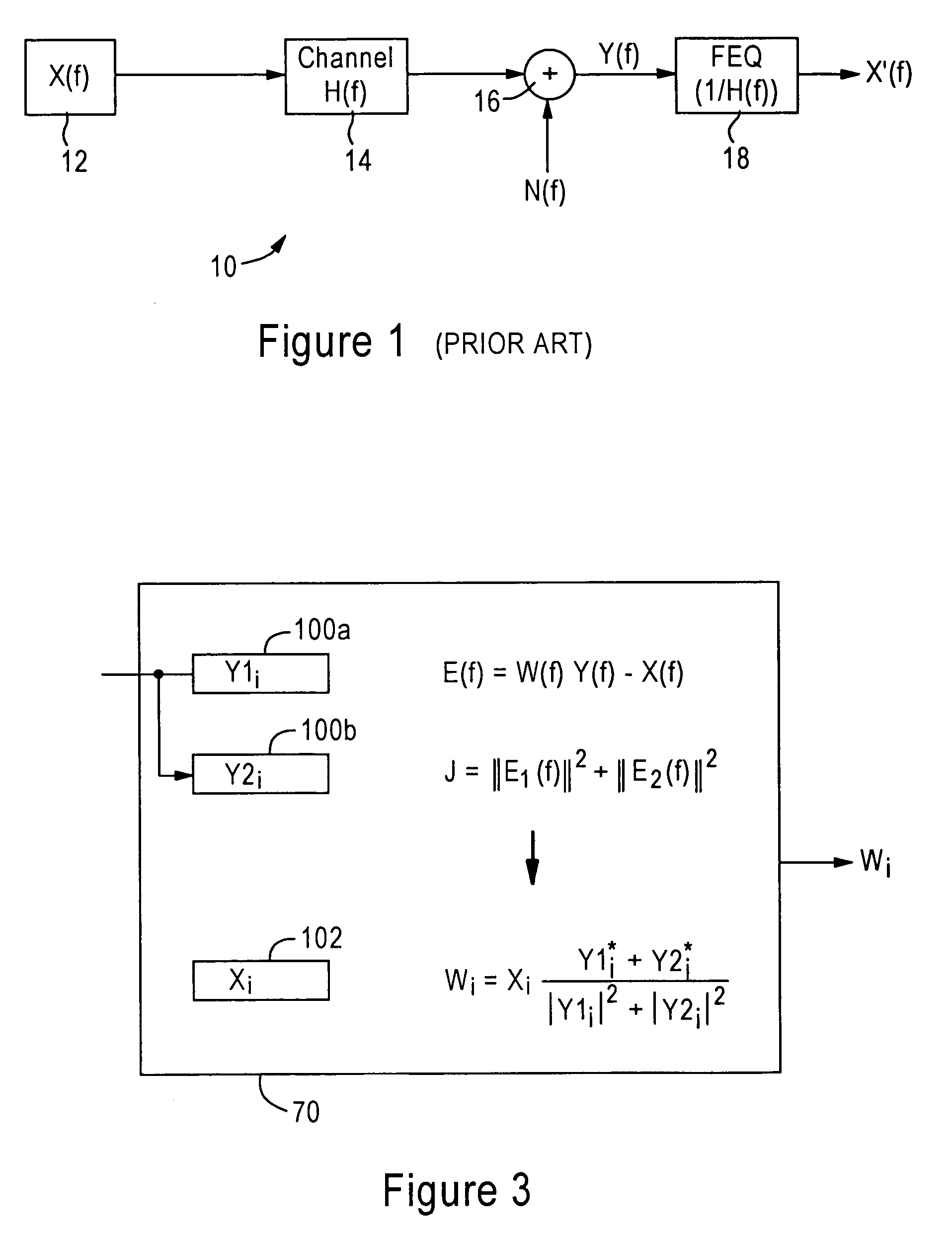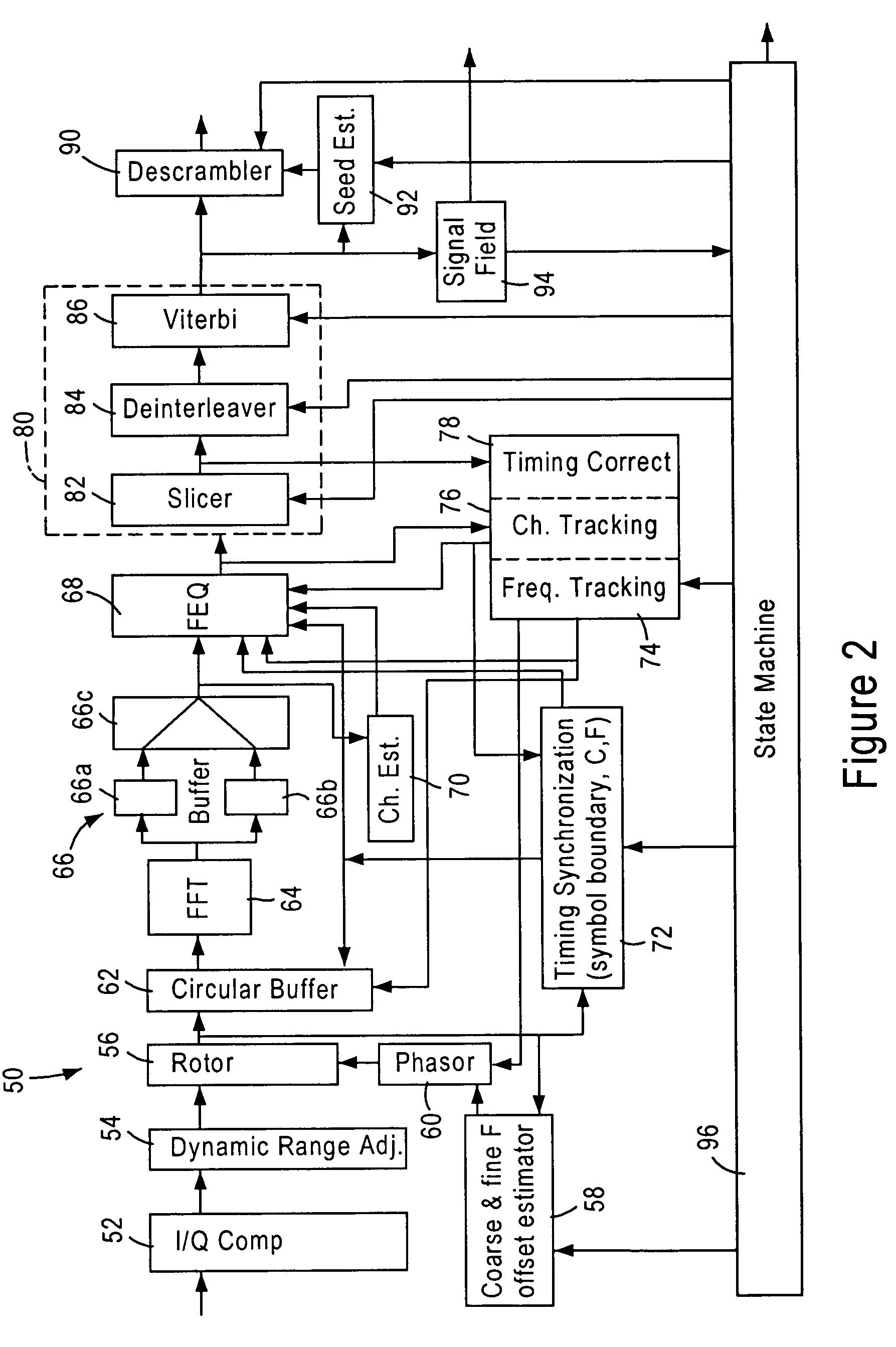Channel tracking using step size based on norm-1 based errors across multiple OFDM symbols
a channel estimator and step size technology, applied in the field of wireless receiver implementation of channel estimators, can solve the problems of large complexity of euclidean distance calculation implementation, large device size, and cost, and achieve the effect of efficient and economical
- Summary
- Abstract
- Description
- Claims
- Application Information
AI Technical Summary
Benefits of technology
Problems solved by technology
Method used
Image
Examples
Embodiment Construction
[0027]The disclosed embodiment will be described with reference to an overview of an IEEE 802.11a OFDM transceiver, followed by a detailed description of the channel estimator implemented according to an embodiment of the present invention.
Receiver Architecture Overview
[0028]FIG. 2 is a diagram illustrating an architecture of a receiver module 50 of an IEEE 802.11a Orthogonal Frequency Division Multiplexing (OFDM) transceiver, according to an embodiment of the present invention. The receiver module 50, implemented as a digital circuit, includes an I / Q mismatch compensation module 52 that receives detected wireless signal samples (in digital form) from an R / F front end, for example a receiver amplifier. The detected wireless signal samples include an I component and Q component: these I and Q components, which normally should be orthogonal to each other and have a uniform relative gain, may in fact have a non-orthogonal phase difference (i.e., other than 90 degrees) and have a nonequ...
PUM
 Login to View More
Login to View More Abstract
Description
Claims
Application Information
 Login to View More
Login to View More - R&D
- Intellectual Property
- Life Sciences
- Materials
- Tech Scout
- Unparalleled Data Quality
- Higher Quality Content
- 60% Fewer Hallucinations
Browse by: Latest US Patents, China's latest patents, Technical Efficacy Thesaurus, Application Domain, Technology Topic, Popular Technical Reports.
© 2025 PatSnap. All rights reserved.Legal|Privacy policy|Modern Slavery Act Transparency Statement|Sitemap|About US| Contact US: help@patsnap.com



